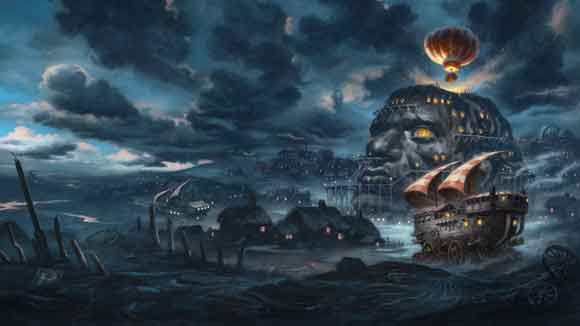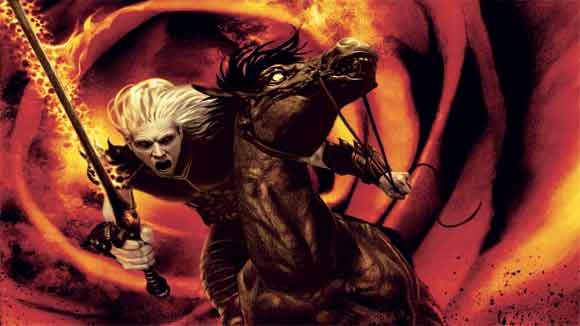From brief to book: A guide to book illustration for beginners
Here, we explain how the publishing cycle works for illustrators and some leading art directors give some top tips on how to get your work noticed
The publishing industry can be a daunting one for any illustrator. From the initial conversation to the final touches, there are more steps to book illustration success than you might think.
01. Initial conversation
Once the art director has a project confirmed, they will think about who the best illustrator might be. Both parties will then get in touch for a loose conversation and an exchange of ideas. The art director might ask for some roughs or samples for further discussion.
02. Layouts
Whether the work is either a cover commission or for internal illustrations, a rough layout will be prepared by the book's designer. This, along with the manuscript, is sent to the illustrator to work from. The author may be given the chance to comment on what they think the artwork should contain.
03. Roughs
For a cover several roughs are usually required and these will be narrowed down and discussions - often quite in-depth - will take place between the art director and the illustrator. There's usually less discussion about individual internal illustrations; however, there are normally more of them so the roughs stage can be equally intense. A deadline will be agreed for finished work.

04. Final images
When the right approach has been chosen, it's the illustrator's chance to shine. The final images must be rendered, taking into account the initial brief and further discussions with the art director about the direction of the piece. Sometimes work-in-progress is sent in for comment and discussion.
05. Submission
Scans of the final artwork are sent in or, as is more common these days, the digital files are submitted. The designer and art director may request amendments, or tweak elements such as colour when they complete the layout of the cover and internal pages.
06. Approval
Good publishers usually send a PDF of the finished book to the illustrator to sign off before going to print. He or she might even be asked to come in and approve physical proofs of the book with the art director and designer. Then it's time to wait for payment, look for a new brief, and keep an eye out for the book's appearance on the shelf.

10 top tips for book illustrators...
So, now you've got to grips with what happens in the publishing cycle, take a look at these top tips from some leading art directors.
01. Look and study
Before starting a project, cast your eye over abroad array of illustrated books. A good book illustrator knows and understands the history of what has gone before.
02. Rethink your portfolio
If you want to secure book cover work then be sure to include suitable examples in your portfolio. Books have very different requirements to concept or game art briefs.
03. Read the book
Sometimes you'll be commissioned by the publisher to illustrate a book that's still being written, but wherever possible read the book carefully - twice if you need to.
04. Thumbnails
Produce plenty of thumbnails of the key scenes. Keeping in mind details of the characters and the settings, think of a style that suits the book and will appeal to the readers.

05. Add but don't deviate
Don't paint things that are obviously different to what's described in the book, but remember you're bringing the story to life. You may need to add things to complete a scene.
06. Prepare for changes
Publishing is a tough world and art directors have many demands on them. You might need to give up on your first choice image, or see it changed radically for publishers.
07. Think like a designer
You may receive a template indicating where the text will be - you may not. You must create your image with this in mind. Mock up the page or cover with text to see how it looks.
08. Cover composition
Make sure your cover compositions are simple, striking and graphic. Your work needs to jump off the shelf from three feet away, and look great at thumbnail size on Amazon.
09. Silhouette foreground
A good art trick is to mask over your foreground to create a silhouette. Does the foreground-background contrast make for an arresting composition? Think about it.
10. Meet the deadline...
...and if you can't meet it, then it's important to let the art director know as early as possible, so that accommodations can be put into place.
This feature was originally published in the latest issue of Imagine FX - where Anna Dittmann depicts Snow White and the evil queen in their double cover special along with a free DVD! Subscribe today for your fantasy and sci-fi digital art fix.

Thank you for reading 5 articles this month* Join now for unlimited access
Enjoy your first month for just £1 / $1 / €1
*Read 5 free articles per month without a subscription

Join now for unlimited access
Try first month for just £1 / $1 / €1
Get the Creative Bloq Newsletter
Daily design news, reviews, how-tos and more, as picked by the editors.

The Creative Bloq team is made up of a group of design fans, and has changed and evolved since Creative Bloq began back in 2012. The current website team consists of eight full-time members of staff: Editor Georgia Coggan, Deputy Editor Rosie Hilder, Ecommerce Editor Beren Neale, Senior News Editor Daniel Piper, Editor, Digital Art and 3D Ian Dean, Tech Reviews Editor Erlingur Einarsson, Ecommerce Writer Beth Nicholls and Staff Writer Natalie Fear, as well as a roster of freelancers from around the world. The ImagineFX magazine team also pitch in, ensuring that content from leading digital art publication ImagineFX is represented on Creative Bloq.
